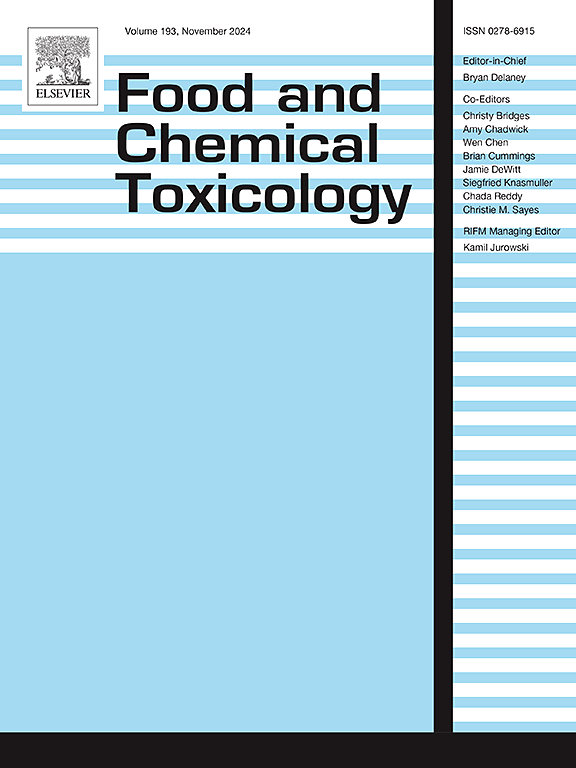Comparative detection of E. coli, B. subtilis and their mixture in yam samples by ATP bioluminescence and SERS methods
IF 3.9
3区 医学
Q2 FOOD SCIENCE & TECHNOLOGY
引用次数: 0
Abstract
Pathogenic bacteria rapid detection is important to ensure food safety and human health. In this study, surface-enhanced Raman spectroscopy (SERS) and adenosine triphosphate bioluminescence (ATP-BL) optical detection platforms were established for evaluating and comparing the performance in the detection of E. coli, B. subtilis and their mixture in yam slices. The results showed that the two techniques significantly reduced the time and cost compared with the traditional culture method. Among them, the detection limits based on SERS were 8.64 CFU/mL, 6.11 CFU/mL and 11.22 CFU/mL for E. coli, B. subtilis and mixed bacteria in actual yam slices, respectively. Accordingly, the detection limits based on ATP-BL were 49.58 CFU/mL, 50.63 CFU/mL and 26.01 CFU/mL, respectively, which demonstrated that both techniques possessed excellent sensitivity and reliability. The results of statistical analysis by t-tests showed that there was no significant difference (P > 0.05) between the two methods and the plate culture method, and the recovery rates were both between 85 %–115 %. In addition, compared to the constructed ATP-BL platform, the SERS method had higher stability, lower detection limit, and shorter time consumption.
ATP生物发光法和SERS法比较检测山药样品中的大肠杆菌、枯草芽孢杆菌及其混合物。
病原菌的快速检测对保障食品安全和人体健康具有重要意义。本研究建立了表面增强拉曼光谱(SERS)和三磷酸腺苷生物发光(ATP-BL)光学检测平台,对检测山药切片中大肠杆菌、枯草芽孢杆菌及其混合物的性能进行评价和比较。结果表明,与传统的培养方法相比,这两种技术显著降低了时间和成本。其中,实际山药切片中大肠杆菌、枯草芽孢杆菌和混合菌的SERS检出限分别为8.64 CFU/mL、6.11 CFU/mL和11.22 CFU/mL。因此,基于ATP-BL的检出限分别为49.58 CFU/mL、50.63 CFU/mL和26.01 CFU/mL,两种技术均具有良好的灵敏度和可靠性。t检验统计分析结果显示,两种方法与平板培养法无显著差异(P < 0.05),回收率均在85% ~ 115%之间。此外,与构建的ATP-BL平台相比,SERS方法稳定性更高,检出限更低,耗时更短。
本文章由计算机程序翻译,如有差异,请以英文原文为准。
求助全文
约1分钟内获得全文
求助全文
来源期刊

Food and Chemical Toxicology
工程技术-毒理学
CiteScore
10.90
自引率
4.70%
发文量
651
审稿时长
31 days
期刊介绍:
Food and Chemical Toxicology (FCT), an internationally renowned journal, that publishes original research articles and reviews on toxic effects, in animals and humans, of natural or synthetic chemicals occurring in the human environment with particular emphasis on food, drugs, and chemicals, including agricultural and industrial safety, and consumer product safety. Areas such as safety evaluation of novel foods and ingredients, biotechnologically-derived products, and nanomaterials are included in the scope of the journal. FCT also encourages submission of papers on inter-relationships between nutrition and toxicology and on in vitro techniques, particularly those fostering the 3 Rs.
The principal aim of the journal is to publish high impact, scholarly work and to serve as a multidisciplinary forum for research in toxicology. Papers submitted will be judged on the basis of scientific originality and contribution to the field, quality and subject matter. Studies should address at least one of the following:
-Adverse physiological/biochemical, or pathological changes induced by specific defined substances
-New techniques for assessing potential toxicity, including molecular biology
-Mechanisms underlying toxic phenomena
-Toxicological examinations of specific chemicals or consumer products, both those showing adverse effects and those demonstrating safety, that meet current standards of scientific acceptability.
Authors must clearly and briefly identify what novel toxic effect (s) or toxic mechanism (s) of the chemical are being reported and what their significance is in the abstract. Furthermore, sufficient doses should be included in order to provide information on NOAEL/LOAEL values.
 求助内容:
求助内容: 应助结果提醒方式:
应助结果提醒方式:


